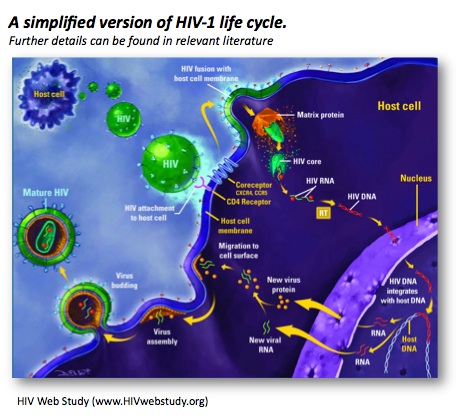Let's Meet the HIV Virus
HIV stands for human immunodeficiency virus. It is the virus that can lead to acquired immunodeficiency syndrome, or AIDS. Unlike some other viruses, the human body cannot get rid of HIV. That means that once you have HIV, you have it for life.
No safe and effective cure currently exists, but scientists are working hard to find one, and remain hopeful. Meanwhile, with proper medical care, HIV can be controlled. Treatment for HIV is often called antiretroviral therapy or ART. It can dramatically prolong the lives of many people infected with HIV and lower their chance of infecting others. Before the introduction of ART in the mid-1990s, people with HIV could progress to AIDS in just a few years. Today, someone diagnosed with HIV and treated before the disease is far advanced can have a nearly normal life expectancy.
HIV affects specific cells of the immune system, called CD4 cells, or T cells. Over time, HIV can destroy so many of these cells that the body can't fight off infections and disease. When this happens, HIV infection leads to AIDS.
 Video - HIV Replication in the Cell
Video - HIV Replication in the Cell
HIV is classified as a retrovirus that has a long latency period. HIV invades the body through the bloodstream and uses the immune system against itself. As the macrophages recognize the invader, they attack just as they would for any other foreign substance.HIV virus is passed from one person to another through blood and body fluids. It then travels through the bloodstream to many different places in the body. Some of the HIV are destroyed when the helper T cells join the battle, however, the HIV attach themselves to the T cells and the T cells accept the foreign cells as their own. The outer covering of the two cells fuse. This defense is coordinated by the helper T cells. But the HIV virus has a unique battle strategy; it attacks the T cells themselves, crippling the body's defenses. HIV has a special shape on its surface which, like a piece of a jigsaw puzzle, fits perfectly into a shape on the T cell. This shape is a protein called CD4. HIV uses CD4 to enter the cells it infects. This is why the T helper cell is referred to as a CD4 lymphocyte.
Once inside the T-4 cell, HIV uses a reverse transcriptase enzyme to translate its own genetic program ribonucleic acid (RNA) into the T-4 cells' genetic material deoxyribonucleic acid (DNA). Instead of fighting against the infection, the T cell is programmed to either produce more HIV cells or to remain dormant. Once inside a T helper cell, HIV takes over the cell and the virus then replicates. The virus's genetic information (RNA) is transcribed into a form that is identical to the cell's genetic information (DNA). The virus, now in the form of DNA, hides out inside the nucleus of the cell, escaping from the body's defenses. After a while, HIV comes out of hiding and begins to reproduce. The proteins are cut into usable pieces and packaged with the RNA. The new viruses then bud from the cell. Each new virus may then go on to infect and destroy other T cells, weakening the immune system's defense.

